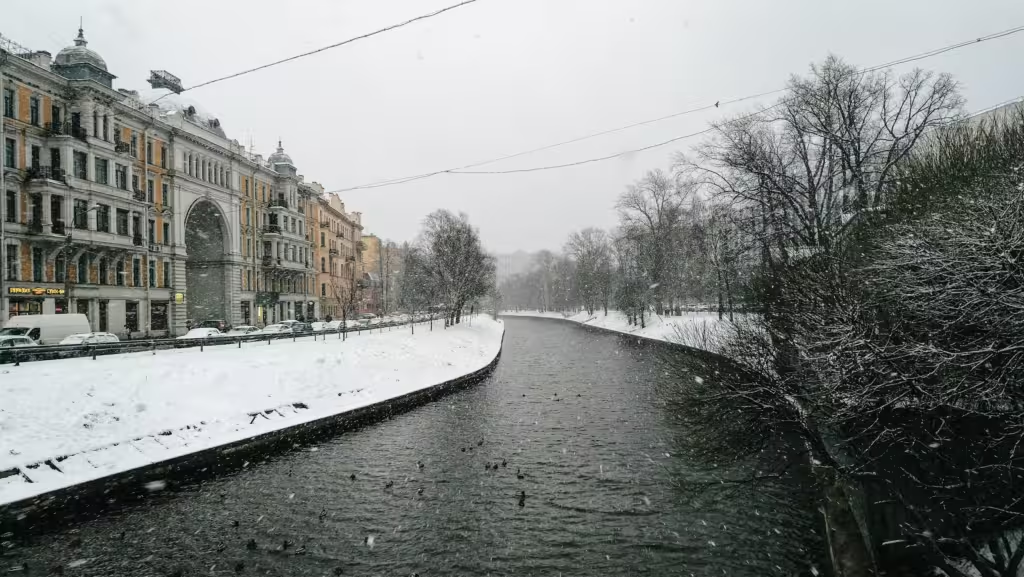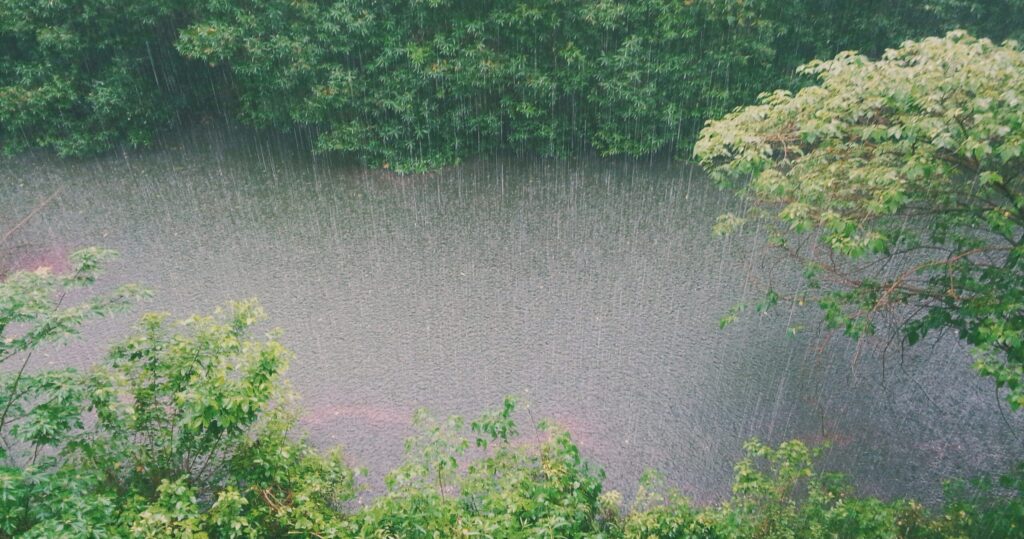Along with the “collapsing polar vortex”, climate journalists are now barely able to write a news commentary without some reference to climate whiplash or its equivalent. Thus a Flipboard email peddles an AP story under the heading “A parched Spain has emerged from drought only to face floods/ Scientists point to climate change as a factor in why such swings between dryness and downpour are becoming more extreme.” And Euronews.green asks “What is climate whiplash?” and promptly answers “New report reveals dangers of flooding and drought in European cities”. As does old report, since flooding and drought have been dangerous since the invention of complaining about the weather. The question is: Does the data really say it’s getting worse, or do journalists just assume so?
Euronews.green would have you think the data says so. No, not the opening “Researchers have found that 90 per cent of all climate disasters are driven by too much or too little water.” Any fool who ever heard of floods or tidal waves or drought would have guessed that part. What’s left, other than hurricanes and volcanoes?
No, not even those. OK, volcanoes don’t involve water unless they go off under water. But as NOAA says on a page “Hurricanes”, “Hurricanes bring extreme rainfall”. And more:
“Hurricanes are one of nature’s most powerful storms. They produce strong winds, storm surge flooding, and heavy rainfall that can lead to inland flooding, tornadoes, and rip currents.”
But we digress. The point is, Euronews.green breathlessly insists that:
“A new report has revealed how the 100 most populated cities globally are becoming increasingly exposed to flooding and drought. The study, led by WaterAid with academics from the University of Bristol and Cardiff University, shows widespread drying throughout European cities. These include the Spanish capital Madrid, which was ranked second among the 49 drying cities, and the UK capital London, ranked 44th. Findings also indicate that almost one in five of the cities studied are experiencing ‘climate whiplash’, defined as intensifying floods and droughts. A similar proportion (20 per cent) have seen a major switch from one extreme to the other, known as ‘climate hazard flips.’”
Another way of putting it is gee, weather changes a lot. As the story adds:
“Around the globe, around 13 per cent of cities are switching to a more extreme wet climate, while the remaining 7 per cent are shifting to a more extreme dry climate.”
Now if you believe in “climate change” as a bogeyman causing climate to change, instead of just being a description of altered weather patterns, we still ask you this question: if there were no “climate change” but just weather patterns bouncing around, what are the odds that at any given time roughly one in six cities would be going one way on too wet v too dry, and half as many the other way?
We would also note, at the risk of spoiling the lack of fun, that if one in five cities is experiencing “climate whiplash” then four in five are not. So what are the odds that in any given half-century or so, absent a long-term trend in any direction, one in five cities would see the alternation between wet and dry getting more intense while the rest did not?
You get the idea. When 80% aren’t, it doesn’t really feel like a global pattern. But if weather is just prone to changing, then it’s very probable that at any given time, some cities really are getting more rapid alternation between too much rain and not enough whereas others, perhaps including some in that 80%, are seeing it become less common. Only the “deniers” who deny that weather ever changed until humanity ate from the tree of CO2 and Whiplash in the Goreden of Greten would regard such a thing as odd, let alone unprecedented and proof of catastrophe.
If we were feeling snide, we’d mention that just as findings of an increase in hurricanes due to climate change are strongly statistically correlated with NGO funding, so having the international giant significantly state-funded NGO WaterAid as lead on a study is probably correlated with everything from a land acknowledgement to a climate crisis. But not with carefully examining the data for possible weaknesses.
For instance, was there an equal or greater increase in “climate whiplash” in urban areas in the previous 50 years? Are as many cities seeing less of it as are seeing more? How far back do reliable records go in many of the places in question? What do we know of these conditions in, say, the 18th century in Europe? Or the 12th?
We’re not even sure how much to trust their measure of wetting/drying, which apparently involves:
“a metric called SPEI (Standardised Precipitation Evapotranspiration Index15 at 0.1° resolution (~10 km at the equator) over each of the cities. SPEI accounts for both changes in rainfall supply (i.e., precipitation, P) and evaporative demand (i.e., potential evapotranspiration, PET), which are the key atmospheric components of the water balance.”
Might not this calculation necessarily indicate a worrying “trend” anywhere it was applied even if all you were getting was minor natural fluctuations? After all:
“we split the entire time series into two halves: 1982-2002 and 2003-2023. For each half of this time series, we computed several metrics: i. Number of significantly wet/dry months ii. Number of extremely wet/dry months. These metrics enabled us to assess whether the climate for each city over the last 42 years is switching from wet to dry or dry to wet (climate hazard flips) and whether climatic extremes are becoming more frequent (climate hazard intensification) or less frequent (climate hazard abatement).”
Bosh. Without control group 21-year periods all you get is random noise. You have no idea if this kind of flipping back and forth is perfectly normal, is getting less common or is getting more common. You just label everything a “hazard” and then go here come the hazards. If you added in 1961-1981 your “trends” might be completely disrupted.
The Guardian, true to form, went even more berserk on this study:
“Climate whiplash is already hitting major cities around the world, bringing deadly swings between extreme wet and dry weather as the climate crisis intensifies, a report has revealed. Dozens more cities, including Lucknow, Madrid and Riyadh have suffered a climate ‘flip’ in the last 20 years, switching from dry to wet extremes, or vice versa. The report analysed the 100 most populous cities, plus 12 selected ones, and found that 95% of them showed a distinct trend towards wetter or drier weather.”
Deadly swings. Climate flips. Distinct trends. And we are all going to die, especially if we live in a poor city with lousy infrastructure where, they carefully don’t note, weather has always been especially deadly:
“The changing climate of cities can hit citizens with worsened floods and droughts, destroy access to clean water, sanitation and food, displace communities and spread disease. Cities where the water infrastructure is already poor, such as Karachi and Khartoum, suffer the most.”
Is anyone, even a Guardian journalist, going to say with a straight typeface that flooding and droughts have not been wreaking havoc in Karachi and Khartoum since they were founded and before?
Ah but nay. Instead, and we all saw it coming:
“The analysis illustrates the climate chaos being brought to urban areas by human-caused global heating…. More than 4.4 billion people live in cities and the climate crisis was already known to be supercharging individual extreme weather disasters across the planet.”
Climate chaos in urban areas? Really? Like the Ottawa ice storm of 1998? Did the journalist discover that in Karachi 2020 saw “the worst flooding since 1931”? That as far as we can tell the 10 deadliest floods in world history occurred, in ascending order, in 1974, 1954, 1212, 1287, 1099, 1530, 1935, 1938, 1931 and 1887? Think none of them hit cities? What about the worst droughts in history? Yes, also scattered across the years, for instance the Deccan famine of 1630-32. Or the ghastly drought-driven famines of 1876-78 in south India and of 1876-1879 in north China. We mention the latter particularly because the deadliest flood in history appears to have occurred nearby geographically and chronologically, the 1887 Yellow River Flood.
If only journalists or researchers had Google on their computers, we say again. Before noting that the story also said without a hint of irony that:
“‘Our study shows that climate change is dramatically different around the world,’ said Prof Katerina Michaelides, at the University of Bristol, UK.”
So global warming isn’t this global phenomenon, it’s just a bunch of different stuff happening in different places. As it always has.



I remember the good old days when people would say "if you don't like the weather around here, just wait 5 minutes, it will change"!
What the current, "if it blows, it shows" journalism omits is credit to the unseen hand of coveringclimatenow.org which, with "500+ news and media partner" in 60 countries, reaching a 2,000,000,000 audience, "supports, convenes, and trains journalists and newsrooms...to transform how our profession covers the defining story of our time."
Reporting guides, explainers, political angles, all the way to complete story templates, CCNow is a one stop shop providing free mentoring to cash strapped media, ensuring everyone sings from the same page against "the greatest threat to humanity" as Alan Rusbridger, editor of the co-founder "Guardian" justified his own prior abandoning fair and balanced news coverage.
"Unless news outlets around the world dramatically improve and expand their climate coverage, there simply will not be the public awareness and political will needed to tackle the crisis."
Top of the current to do list is, "The 89% Project" to amplify "the silent global majority who want climate action".
All together now....
No it wasn't, it all used to be under firm government control!!
https://youtu.be/aCA_0YRCORQ?si=iBxVjQR7PiOiogW9
There's lies, damn lies, and then there's statistics - Mark Twain
How does one know a head politician obeys its hebrew bible? It pretends and simulates it on the dry land earth.
Global cooling, the evening sky after sunset; Global warming, the dawn sky before sunrise. See Sodom and Gomorrah. Two sky world cities burnt up by the sulphur coloured sun below the fiery red horizon. The Holocaust: the red sunset horizon burning the starless evening sky (dusk) into the dark, star-filled ashes of the celestial night sky 'Is-Ra-El'.
Also known as Armageddon, Apocalypse, Revelation, Divine Retribution, Noah's Flood, Exodus, Ten Plagues of day sky 'Egypt', Covid plague/pandemic, AIDS pandemic, War of The Worlds, World War 1 and 2, Cold War, Terrorist War, Revolutionary War, Civil War, War of Independence, World Trade Center Bombing (dawn), 911 (dawn and dusk), Nuclear War/Holocaust, and every other war and "plague" manufactured, posed, or pushed by the elite of the night sky idolizing cult clan.
6000 year old Modern Civilization, templated on the hebrew bible, Talmud, and occasionally other celestial night sky-describing, ancient mythology adopted by the elite.